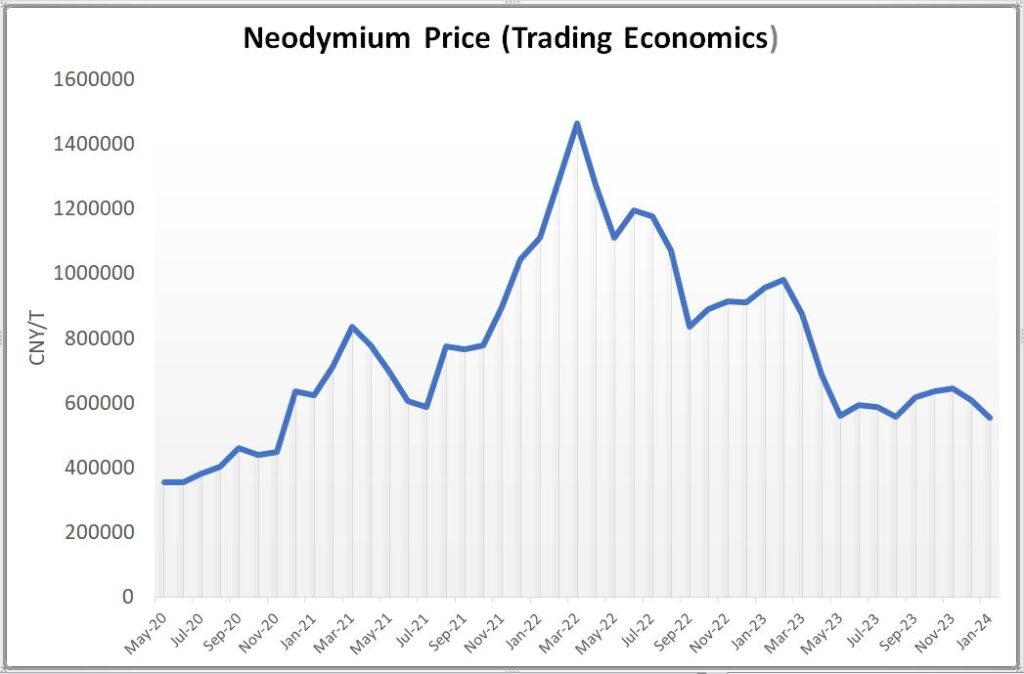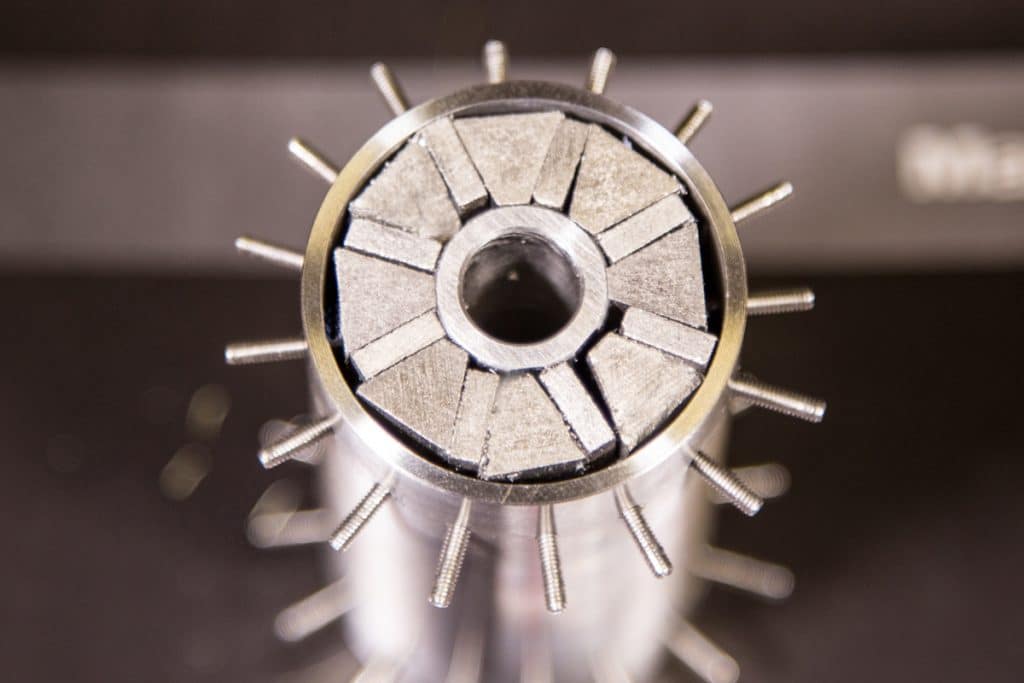Neodymium Price Trends
By Paul Fears | 24 May 2021
Updated 25th January 2024
On January 1st 2025, after rallying between August and November, the price of Neodymium fell to the lowest level since November 2020. The outlook remains uncertain, with further decreases likely in the short term. In 12 months, the price of Neodymium has fallen by 42%, way down on the peak price of 1,460,000 CNY/T in March 2022. (Trading Economics).

Magnet & Magnet Assembly Design
At Bunting, the focus is on material, production and engineering advice to support cost effective manufacture of magnet assemblies and magnets. This helps limit the effect of such price uncertainty.
For magnet assemblies, the magnet cost may only represent a third of the total system cost so advice on cost effective shaft design vs magnet geometric profiling is valuable. Halbach designs are used for high performance rotors, greatly increasing the difficulty of traditional assembly and therefore cost. However, such designs are perfect for in-house post-assembly magnetisation, with associated savings in time and cost as well as de-risking the whole production process. Bunting’s magnet design team work closely with customers to engineer the optimum solution.

Magnets are a unique material. They do ‘work’ and, as such, are under constant stress. This stress can lead to demagnetisation. The primary concern of every magnetic engineer is to get the most ‘work’ out of the smallest magnet, without causing demagnetisation. This means optimising every aspect of the magnet, of which there are many paths.
- Technical Product Information: Magnet Assemblies
Bunting engineers assess techniques to get the most ‘work’ out of a magnet, without simply making the magnet bigger (higher cost) or using higher coercivity grades (higher cost, lower strength).
One key area of magnet technology development is in the use grain boundary diffused Dysprosium to enhance Neodymium magnets coercivity without the traditional methods that cause a significant drop in total energy product. This secondary manufacturing process concentrates the Heavy Rare Earth Element Dysprosium into the grain boundaries of the magnet microstructure. This not only nets a performance increase, but uses less Dysprosium resulting in a more stable price than traditional method magnets.
- Technical Product Information: Grain Boundary Diffused Magnets
The best end solution is commonly achieved when both design teams work together from the outset. Additionally, by using new technology and manufacturing techniques, costs are minimised and performance maximised.
Neodymium – A Key Raw Material
Neodymium is one of a range of critical rare earth materials used widely in electronics, automotive and growing clean-energy sectors such as electric vehicles and wind power. 80% of all rare earths are produced in China, although there is increasing production in Australia, Malaysia, USA, Russia, Vietnam and India.
- Technical Product Information: Neodymium Rare Earth Magnets
In 2019, global consumption of Neodymium Iron Boron (NeFeB) magnets was 105,300 tonnes. Consumption is forecast to grow by 7.5% per annum, with the demand for use in electric vehicle anticipated to account for 40% of the total by 2030. Between 2 and 5 kg of rare earth magnets are used in every electric vehicle and the International Energy Agency forecasts that there could be 230 million electric vehicles worldwide by 2030 equating to 805,000 tonnes of rare earth magnets (at an average of 3.5 kg per vehicle).
Magnet Recycling
One magnet source to meet the ever-increasing demand is the recovery and reuse from waste. Bunting is part of the EU-funded SUSMAGPRO project, researching the sustainable recovery, reprocessing and reuse of rare earth magnets in Europe. Many rare earth magnets are presently lost to waste. Research undertaken by the University of Birmingham in conjunction with SUSMAGPRO is identifying techniques to recover the valuable magnets to enable reuse or recycling. The project anticipates offering recycled magnets to the general market by the end of 2021.
Related Technical Articles
- Rare Earth Magnets Recycling Task Force
- Explaining Neodymium Magnet Strength
- Rare Earth Magnets in Electric Vehicle Motors
Magnet and Magnet Assembly Design
Bunting designs and manufactures a wide range of magnets and magnetic assemblies. Many are bespoke for specific applications. For further information on any of the products mentioned in this article, or for bespoke magnet assemblies and magnet designs, please contact us via:
Phone: +44 (0) 1442 875081
Email: sales.berkhamsted@buntingmagnetics.com
Via Bunting-eMagnets for online purchase of Magnets and Magnetic Technology
Follow us for all our latest news on Social Media


